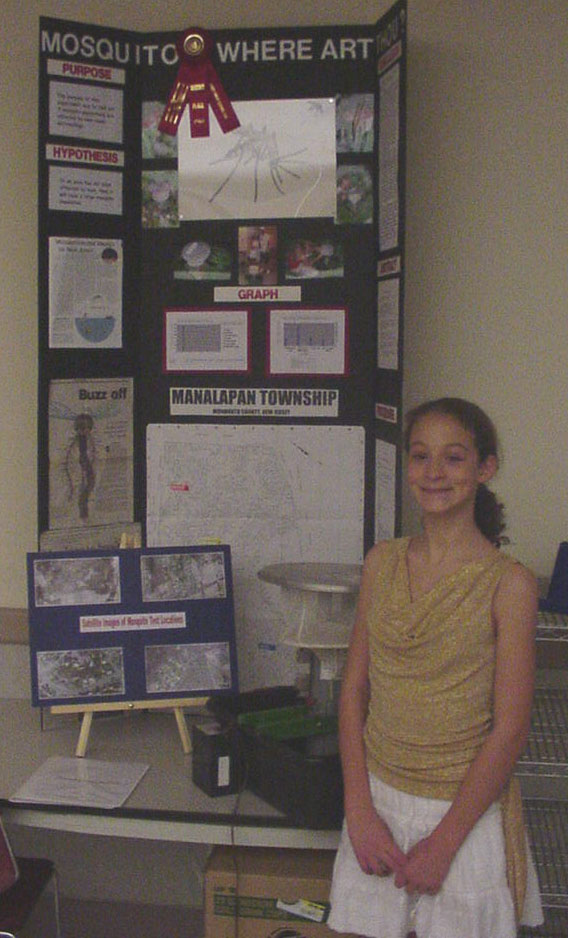
|
Jenna
Kennan, an eighth grade student at Manalapan-Englishtown Middle
School, Manalapan, New
Jersey, studied, “Mosquito, where art
thou?"
For
a Middle School student, a great beginning!
This student shows that she can think on a scientific level and has
shown the drive and ingenuity to obtain her desired results. She
needs a little work on comparing and
developing datasets and increasing frequency of trials, but, overall, a
great
start.
|